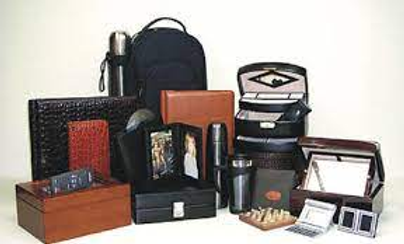What is the best gift from a company?
Products that are offered for free or at a low cost to promote a brand, business identity, or event are known as promotional items. These items, which are utilized in marketing and sales, are frequently referred to informally as promo products, swag[1], tchotchkes, or freebies (count nouns). They are distributed or sold for a loss in order to advance a business, brand, event, or corporate image. They are frequently given out as handouts at trade exhibitions, conferences, sales calls (that is, visits to businesses who are or might be interested in purchasing), and as extras in shipments of orders. Guerrilla marketing efforts frequently employ them.
Commemorative buttons from the time of George Washington’s election in 1789 were the first promotional items that are known to have existed in the United States. However, until later in the 19th century, there was no structured business for the production and sale of corporate promotional gifts objects. Early in the century, there were some advertising calendars, rulers, and woodwork specialty.
Many believe that Coshocton, Ohio printer Jasper Meek, who persuaded a nearby shoe shop to give local schools book bags branded with the store name, is the one who started the industry. The idea was picked up by Henry Beach, a rival printer in Coshocton, and soon the two men were printing and selling marble bags, buggy whips, card cases, fans, calendars, cloth caps, aprons, and even hats for horses.
The first trade association for the promotional products sector was established in 1904 by 12 makers of these products. With more than 10,000 members worldwide, that group is now called the Promotional Products Association International, or PPAI. [3] The promotional products sector, which includes over 22,000 distributors and over 4,800 manufacturers, is represented by PPAI.

As corporate marketing advanced in the late 1950s, a formal promotional goods business developed in the UK and Ireland. Companies may have occasionally given out presents prior to this, but there was no established promotional merchandise sector. The 1970s saw the business for promotional goods really take off in terms of growth. At this time, a growing number of corporate businesses realized the advantages of using giveaways with their own logo to promote their corporate identity, brand, or product. The number of products was initially restricted, but distributors began to ask for a generic promotional product catalogue they could brand as their own and give to their corporate clients in the early 1980s.
In the future, these catalogs might be heavily branded to reflect a distributor’s corporate identity, after which distributors might distribute them to their end-user clients under their own name. Early catalogues for promotional goods were primarily used as sales vehicles, and readers would purchase the items they provided.
New catalog services for distributors started to appear in the 1990s from different sources. The 1990s also saw the birth of “Catalogue Groups,” organizations that provided a distinctive catalogue to a select geographic group of distributors of promotional goods. Lets read more….



Comments
Post a Comment